Protective Relay: Working, Types, and Applications
Introduction
A protective relay is an intelligent electrical device designed to detect faults in power systems and initiate corrective actions such as tripping a circuit breaker. Its main purpose is to safeguard electrical equipment like transformers, generators, and transmission lines from damage due to abnormal conditions such as overloads, short circuits, or voltage imbalances.
Protective relays form the backbone of modern power system protection, ensuring both equipment safety and system reliability.

Working Principle of Protective Relays
The working of a protective relay is based on continuous monitoring of electrical quantities such as current, voltage, frequency, and power.
A typical protective relay circuit is shown below:
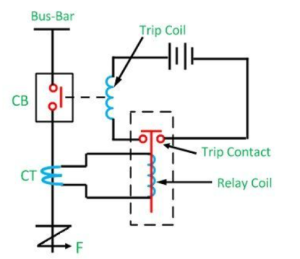
Protective Relay Circuit Diagram
- The first part of the circuit consists of the primary winding of a CT which is also called a current transformer. This CT is connected with the transmission line in series to be protected.
- The second part includes the secondary winding of the current transformer, CB (Circuit Breaker) & the operating coil of the relay.
- The final part of the circuit is the tripping circuit which may be either AC/DC. So it mainly includes a source of power supply, the circuit breakers trip coil & the stationary contacts of the relay.
Working
Once a short circuit at the ‘F’ point on the transmission line occurs, then the flow of current within the transmission line will increase to an enormous value. So this causes to flow heavy current throughout the relay coil and makes the protective relay function by simply closing its contacts.
Consequently, it closes the trip circuit of the CB and makes the CB open & separating the faulty segment from the system. So in this manner, this protective relay ensures the security of the equipment of the circuit from breaking & typical working of the system.
Thus, relays act as a decision-making unit in power system protection.
Types of Protective Relays
Protective relays can be classified based on their operating principle, construction, or function:
1. Based on Operating Principle
-
Electromechanical Relays: Work using moving parts and electromagnetic forces (traditional relays).
-
Static Relays: Use electronic components without moving parts.
-
Numerical Relays: Digital relays that use microprocessors, offering advanced protection and monitoring features.
2. Based on Function
-
Overcurrent Relay: Operates when current exceeds a preset limit.
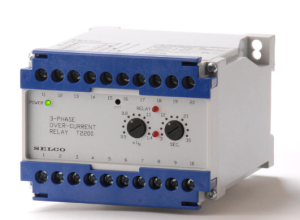
-
Differential Relay: Compares currents at two points; operates when there is a difference (used in transformers and generators).
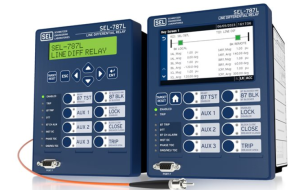
-
Distance Relay: Operates based on impedance, commonly used in transmission line protection.

-
Earth Fault Relay: Detects leakage currents to the ground.
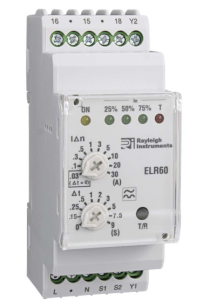
-
Over/Under Voltage Relay: Protects against abnormal voltage conditions.
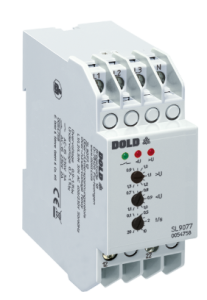
-
Frequency Relay: Trips when frequency deviates from normal limits.
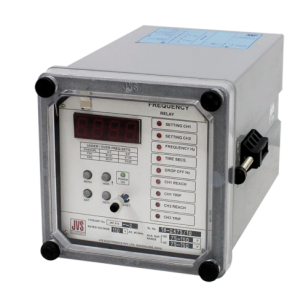
Applications of Protective Relays
-
Power Transmission and Distribution: Protects transmission lines and substations from faults.
-
Transformers: Prevents overheating, short circuits, and winding faults.
-
Generators: Protects against overload, loss of excitation, and synchronization errors.
-
Motors: Prevents damage due to overcurrent, single phasing, or earth faults.
-
Industrial Systems: Ensures uninterrupted operation of critical equipment.
Advantages of Modern (Numerical) Protective Relays
-
High accuracy and fast response.
-
Multi-function capability (monitoring, protection, and communication).
-
Compact size compared to electromechanical relays.
-
Self-diagnostic and event recording features.
Conclusion
Protective relays play a crucial role in power system protection, ensuring safety, reliability, and continuity of electrical supply. From traditional electromechanical relays to modern microprocessor-based numerical relays, they have evolved to meet the increasing demands of complex power systems.
Their role in quickly detecting faults and isolating faulty equipment not only prevents accidents but also enhances the overall stability of electrical networks.